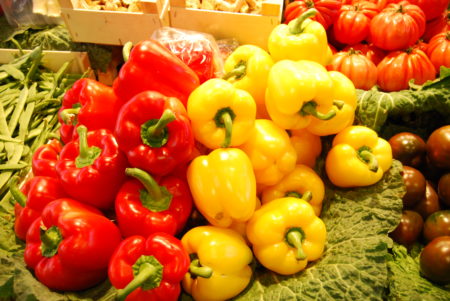
Sweet pepper has ceased to be a gardening and gastronomic highlight. Who came to us from South America in the 16th century, he was forever rooted in many gardens and farms of the country. Today, any grower is able to grow a juicy and impressive crop. It is necessary to choose the right variety. And there is plenty to choose from! To the delight of pepper lovers, the range of varieties offered includes hundreds of options from all over the world. However, Dutch varieties received special love and trust.
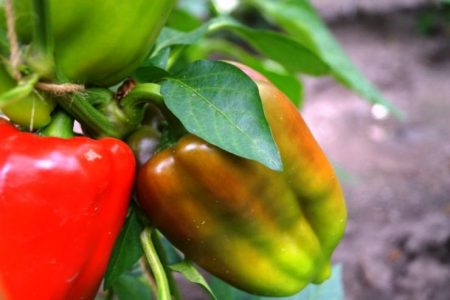
In this category, a large selection of hybrid peppers awaits the grower. The difference between the variety and the hybrid is that the variety is a product of classical selection, the seeds of which retain all the characteristics of the parent plant. Hybrids - the result of crossbreeding, have increased fruiting, but are not able to pass on their characteristics to future generations. In this case, the purchase of seed from season to season is a necessity, but if the task of collecting seed is not worth it, then there are practically no shortcomings in such varieties. Since high productivity and plenty of choice - this is exactly what many vegetable growers strive for.
Content
A little about growing peppers
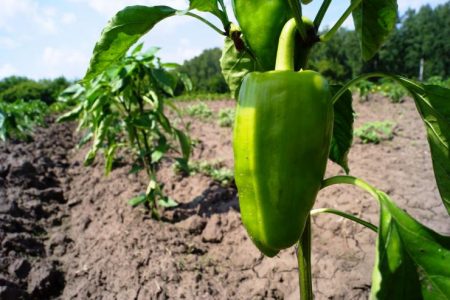
Before proceeding to the consideration of specific varieties, it is worth noting that sweet pepper is an extremely heat-loving plant. In his homeland, the warm season lasts much longer than in our country, so looking at the seeds, you should pay special attention to the ripening time. An ideal choice would be:
- very early varieties;
- early grades;
- medium early varieties;
- mid-ripening varieties (suitable only for warm regions).
The strengthened planting material is planted in the ground only after any threat of frost has passed. In general, the practice of transferring an already formed plant begins after 80 days of growth. The place for future planting should be as sunny as possible.
Another important point - sweet pepper does not tolerate drought. Bushes should be watered once a day in warm weather, in hot weather watering is doubled, the earth is moistened early in the morning and in the evening. It is necessary to maintain balance and not pour pepper, since excess moisture leads to rotting of the roots.
Long-bearing sweet peppers
The Atlant variety is distinguished by large red cone-shaped fruits with a length of up to 20 cm and a weight of up to 400 grams, with a wall thickness of 6 mm. Atlas has a medium density, sweet taste and fresh aroma.
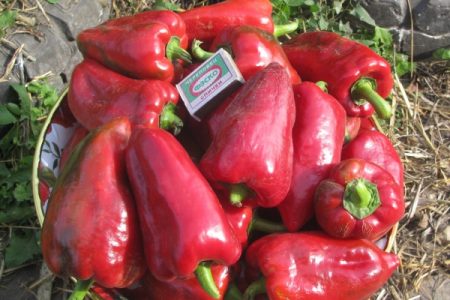
In open ground seedlings can be planted after 40-50 days of growth. Adult bushes are compact in size, and their growth can reach up to 1 meter. The first technical ripeness of the fruit occurs after 120 days from the day of planting. The yield per 1 m2 is 3-5 kg, with an early landing, the second wave is also possible, but it will be much poorer.
Heracles pepper belongs to mid-season plants. The red fruit resembles a cube, the average size is 12 cm in length and 11 cm in width, with a weight of 200 to 400 grams. The wall thickness reaches 7 mm, the pulp is juicy and aromatic.
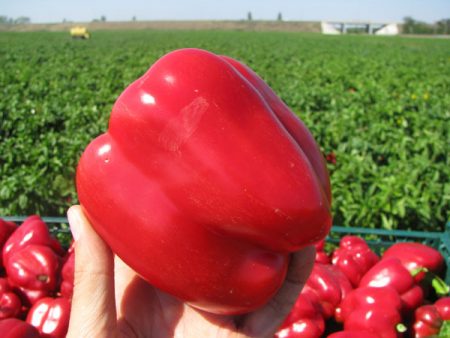
Transplanting to the street is carried out when the earth is heated to at least 10 ° C. Seedlings should be fully formed and pre-hardened. The height of adult bushes can reach 50 cm, the plant is spreading in its structure. Due to the impressive size of the fruit, it may require garter, and also gives increased productivity from 1 m2 to 3.5 kg.
Variety Kakadu is a representative of the mid-season category. It has elongated slightly curved fruits of yellow, green or red color, with a length of up to 30 cm. The weight of ripened pepper is 500 grams. Wall thickness reaches 8 mm. The pulp is sweet and aromatic.
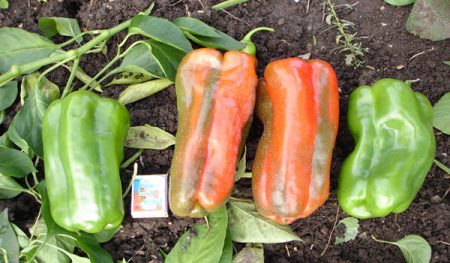
Pepper Kakadu is suitable exclusively for greenhouse plantings. The first crop is harvested after 130 days from the appearance of the sprouts. The bushes are sprawling and require space, the height of an adult plant reaches 1.5 meters. Pleases with a good return in the form of 3 kg of sweet pepper from 1 healthy bush.
Cardinal is a memorable early ripe pepper variety with cubic fruits, with an average weight of 250 grams. The highlight of the Cardinal is the intense purple color of its fruits, which over time can go brown. The wall thickness reaches 8 mm.
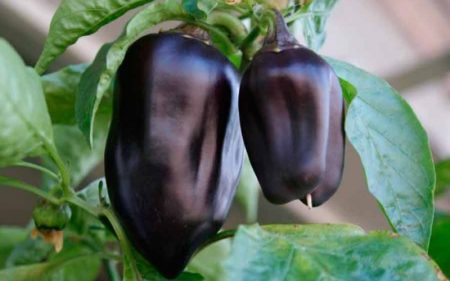
It can be planted in the ground, but preferably greenhouse cultivation. It does not tolerate temperatures below 13 ° C, it is afraid of wind and drafts. The first crop reaches technical maturity by 90 days. The variety is distinguished by a long growing season with independent germination of seeds. Bushes have a height of about 1 meter, need mandatory garter. Under favorable conditions, a yield of 14 kg per 1 m2 is achieved.
Claudio is a member of the group of early ripening varieties, has a large number of fans among vegetable growers and has great fecundity. Fruits of red color of a prismatic form with a weight of 200-250 grams. It boasts thick meaty walls up to 14 mm thick. It has a rich sweet taste without pronounced bitterness.
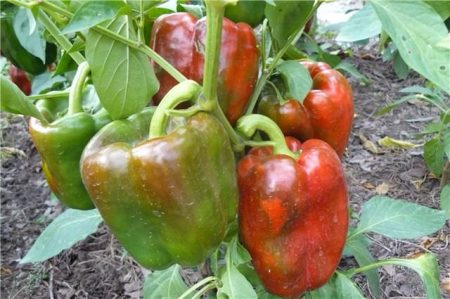
The first fruiting begins after 70 days from the moment of planting material transfer to open ground. The height of the bushes is up to 70 cm, while Claudio is distinguished by a powerful stem. This is an upright plant with a yield of up to 4.5 kg per 1 m2.
Variety Latino representative of mid-season peppers. It pleases with fleshy fruits weighing 220 grams and juicy walls up to 1 cm in thickness. The shape is cubic with a total size of 12x12 cm.
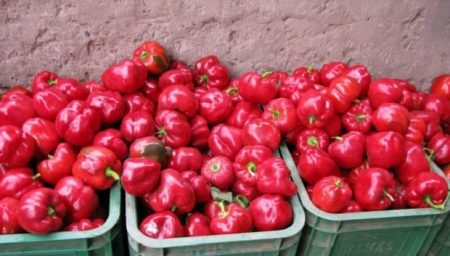
In warm climates, it can be grown in open ground. In cold regions, greenhouses are preferred. At low temperatures, yield decreases, in suitable conditions, healthy and well-groomed plantings give 16 kg per 1 m2 with a technical maturity of 100 days.
Early bell peppers
Variety Pinocchio representative of early ripe peppers. Fruits of red color and elongated conical shape, wall thickness not more than 5 mm, average weight 115 grams. Pinocchio juicy pepper, but rustic in taste.
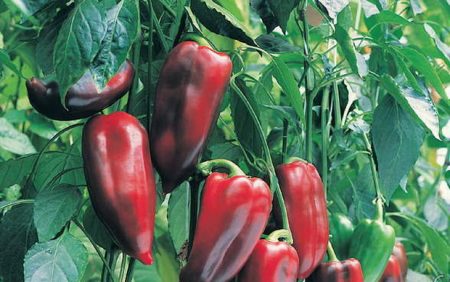
Spreading bushes with a height of more than 1 meter. The first crop with technical maturity can be harvested after 90 days. Yield Pinocchio is 10-13.5 kg per 1 m2.
Eroshka pepper is ideal for short summers. This is an early ripening variety that tolerates low temperatures well. The mass of the ripe fruit is about 160 grams, with a wall of 5 mm. The ripening color is orange-red.
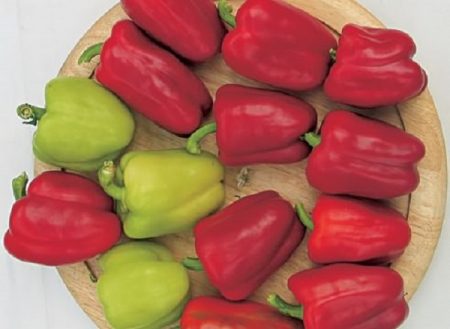
An adult bush extends up to 50 cm. It differs in increased productivity up to 2.5 kg from one bush. This variety is great for compact plantings, so the number of fruits taken from 1 m2 will please any vegetable grower.
Pepper Candy was loved by many for its miniature fruits.Peppers are small balls weighing not more than 50 grams, with a wall of 7 mm. The sweet taste and unusual shape is very popular with children.
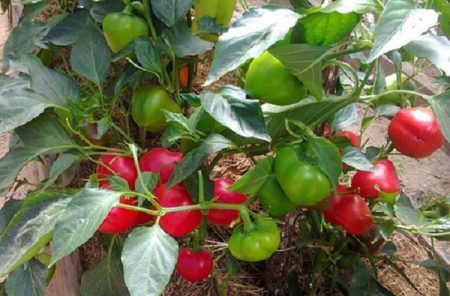
The bushes themselves Sweets are very compact, their height does not exceed 60 cm. It can be grown in any way, the variety is very popular for growing in pots. The first crop is ready for harvest already on day 85 from planting. Bush pepper Sweetie can bring up to 1 kg of fruit.
Pepper Funtik is well known to vegetable growers and belongs to early ripening varieties. Fruits in ripe condition acquire a red color, elongated shape. The weight of 1 pepper reaches 180 grams, with a wall of 7 mm. It has a pronounced pepper taste.
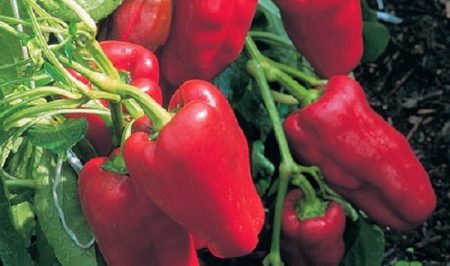
The height of an adult bush is about 70 cm, it has well-developed foliage. With proper care, 1 bush can yield more than 3 kg.
Chardash pepper has a cup-shaped fruit shape with a ripeness color range from yellow-orange to saturated orange-red. It does not have pronounced bitterness. The fruits are large, weighing up to 220 grams, with a wall of up to 6 mm.
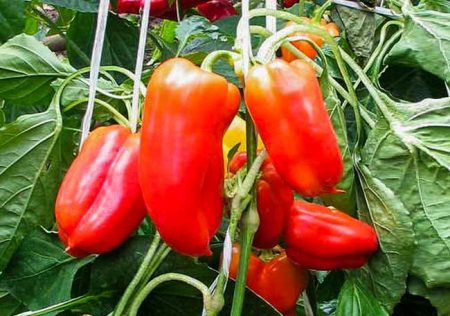
Pleases growers with quick fruit setting and ripening. One bush brings about 3 kg, in terms of square meter, the yield is about 10 kg.
The best varieties of hot pepper
Chilean heat will appeal to those who are not used to strong pungency, but appreciate the pronounced pepper taste. The variety belongs to the category of early ripening. The fruits are elongated, triangular in shape, with a bright red color and attractive gloss. The length of one pepper is 20 cm.
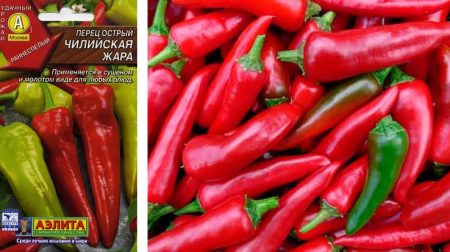
Hungarian - medium hot pepper with a yellow or red color. The fruits are elongated in shape, with a weight of 40 grams and a wall thickness of 4 mm. The bushes themselves are compact and do not grow above 45 cm.
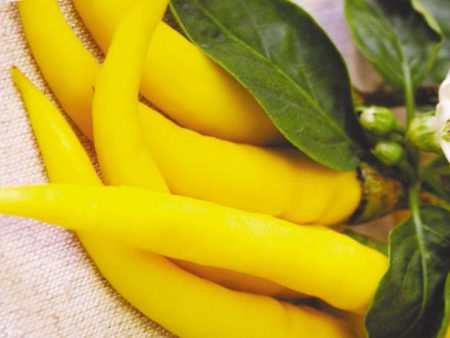
Superchill is distinguished by a pronounced pepper taste and pungency. The variety's color palette changes as the pepper ripens from green to cherry. The length of the fetus is 7 cm, with a weight of 20 grams.
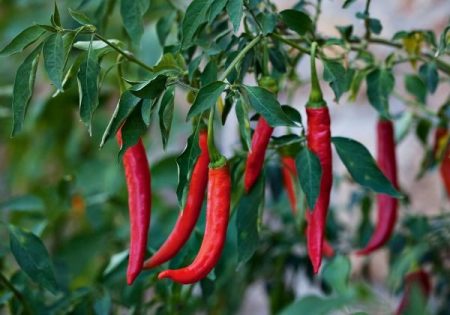
Short pepper
Atlantic is a mid-season variety, the fruit is about 20 cm long and weighs 200 grams. The wall thickness is 1 cm, inside the flesh is crispy, juicy and very dense. In a state of maturity, it acquires a red color, at the stage of technical ripening it is dark green.
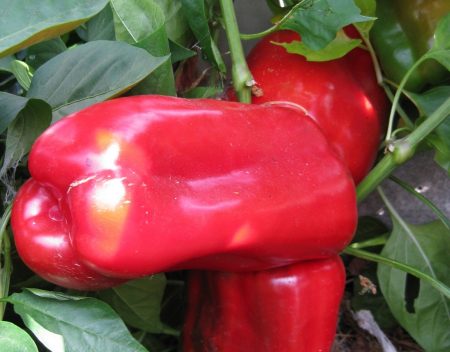
It can be planted both in open ground and in indoor greenhouses. The variety is very demanding on the sun and watering. Bushes stretch up to 1 meter in height and have a strong branching. The ripening period of such pepper is 115 days. In conditions favorable for the variety, the Atlantic pleases with a harvest of 10 kg per 1 m2.
Jeepsey is a representative of the earliest varieties. The fruits are slightly elongated in shape, with a color from light green to red in color when fully ripened. The size of the pepper is 10x6 cm, with a wall thickness of 5 mm and a weight of 100 grams.
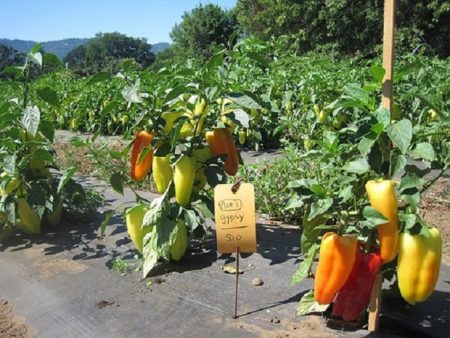
Differs in tenderness of pulp, delicate taste and pleasant aroma.
Suitable for growing in greenhouses and open ground. The ripening period is 60 days. The variety is grown without preliminary picking, otherwise the early harvest is delayed.
The California miracle variety will delight vegetable growers with beautiful fruits with juicy and fleshy pulp up to 1 cm thick. The weight of ripe pepper varies from 90 to 170 grams. The color palette includes green, which turns into red with a slight pink tint. There may be variations with yellow and orange colors.
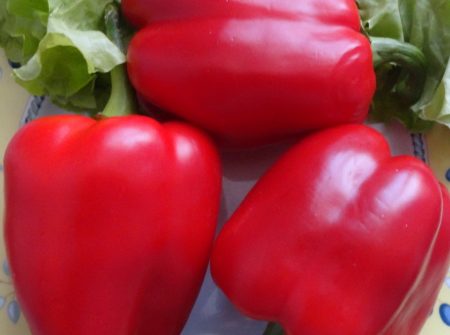
The first fruits with technical maturity are removed after 120 days. Pepper feels great in soil plantings and greenhouses.
Corvette - an early variety is distinguished by cone-shaped fruits with a weight of up to 100 grams, has walls up to 6 mm thick. Ripe peppers have a rich orange color.The taste is sweet, without bitterness. The first fruits ripen on 100 days.
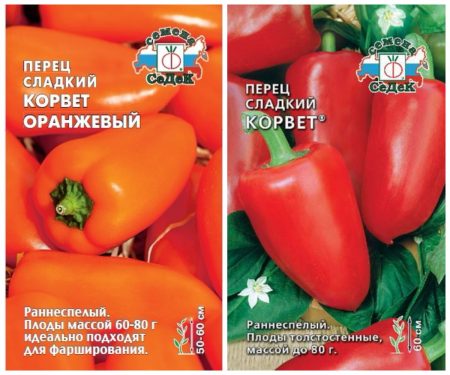
Mirage - early ripe pepper with fleshy fruits of an elongated conical shape. The color of the fetus changes as it ripens from whitish yellow to deep orange. The weight of 1 pepper reaches 160 grams, with a wall of up to 1 cm. The yield of the variety is 5.3 kg per 1 m2. The bushes are moderately spreading, the ripening period of the first crop takes 95 days from the moment of planting.
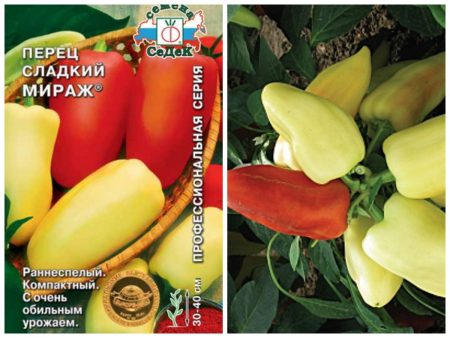
Variety Tamara is a representative of mid-early hybrids. With cone-shaped fruits, the average length of which is about 16 cm. Weight can reach 120 grams, with a wall thickness of 9 mm. Color changes from light green to bright red.
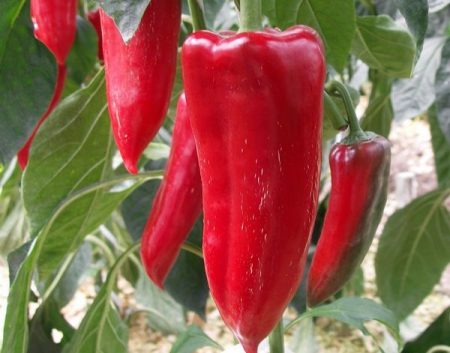
The first crop ripens after 60 days from planting seedlings in the ground, an adult bush has a large amount of foliage, which saves the crop from the sun.
From the practice of vegetable growers
Looking through the reviews of people who have tried or preferred Dutch pepper varieties, you can make sure that in most cases their experiments are successful. Someone selects a variety, relying solely on practice, others consult with agronomists in their regions. But all agree on one thing: if a variety was found that is perfect for a particular climate, then the joy of the harvest will not take long.
Another question is the characteristics of the fruit. The taste preferences of people are as diverse as the number of varieties. Some people are attracted to fleshy peppers with a wall thickness of 10 mm, while others prefer thinner peppers. Therefore, faced with a negative review that the pepper is thin, you should be critical of the information and understand whether this is really bad.
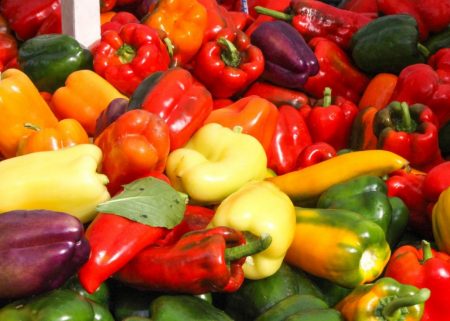
Vegetable growers who sell their crops, note the quality of the resulting fruit. They are stored for a long time and for a long time retain an attractive presentation. In matters of application, Dutch peppers are also universal. Sweet varieties are perfect for stews, salads, slices, vegetable caviar, canning and drying, and the Atlantic variety, due to its increased density, is an ideal candidate for grilling peppers.




 Calorie pepper stuffed with meat and rice - BZHU per 100 grams
Calorie pepper stuffed with meat and rice - BZHU per 100 grams Gorky pepper - the best varieties for open ground
Gorky pepper - the best varieties for open ground Hot pepper seeds - the best varieties for open ground and reviews
Hot pepper seeds - the best varieties for open ground and reviews Capsicum tincture for hair - how to use and reviews
Capsicum tincture for hair - how to use and reviews